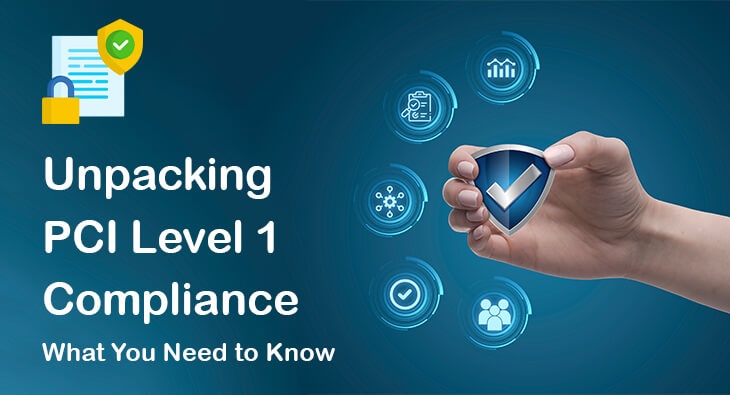For businesses that accept, process, or store credit card information, understanding and maintaining Payment Card Industry Data Security Standard (PCI DSS) compliance is a non-negotiable requirement. Today, we will focus on PCI Level 1 Compliance, the highest and most rigorous of the PCI DSS levels.
What is PCI Level 1 Compliance?
PCI Level 1 Compliance is a mandate for merchants handling over six million credit card transactions each year. As the highest echelon of PCI DSS levels, it is governed by the PCI Security Standards Council (PCI SSC) and stipulates strict security practices to safeguard cardholder data.
To attain compliance, merchants must submit a yearly Report on Compliance (ROC) conducted by a certified auditor. Alternatively, businesses with less transaction volume may use a Self-Assessment Questionnaire (SAQ). This level of compliance is both challenging and essential in maintaining robust
Some Related Blogs
- A Beginner’s Guide to White-Label Payment Gateways
- Top Fraud Prevention Strategies Every High-Risk Business Should Implement
- Choosing the Right High Risk Payment Gateway for Social Media Agency
- Differences Between Card Present and Card Not Present Transactions
Why Is PCI Level 1 Compliance Crucial?
With the digital landscape becoming increasingly susceptible to cyber threats, PCI Level 1 Compliance has emerged as a pivotal safeguard for businesses and their customers. This highest level of compliance acts as a protective shield for cardholder information, substantially diminishing the risk of damaging data breaches and fraudulent activities.
When you ignore compliance, the repercussions can be dire, leading to irreversible harm to your brand’s reputation, costly lawsuits, and a devastating erosion of customer trust. The road to compliance may seem rigorous, but the security it offers is invaluable.
Essential Requirements of PCI Level 1 Compliance
Diving into the nitty-gritty of PCI Level 1 Compliance, there are 12 essential security areas that businesses must adhere to. These run the gamut from constructing a secure network fortified by robust firewalls, to the absolute protection of cardholder data. Staying one step ahead of cyber threats is paramount, hence regular updates to your antivirus software is a must.
Add to that, you need to manage data access meticulously, only permitting those who absolutely need it. Regular network testing and a well-defined information security policy round off the dozen requirements. A business needs to shine in all these areas to achieve this highest level of PCI compliance.
Achieving PCI Level 1 Compliance
Securing PCI Level 1 Compliance is a two-fold process. To kick-start your journey, you’ll need a thorough audit from a Qualified Security Assessor (QSA), approved by the PCI SSC, who will scrutinize your business against the 12 stringent requirements.

Following a successful audit, your next checkpoint is a network scan, performed by an Approved Scanning Vendor (ASV). This scan is integral in ensuring your network’s robustness and effectiveness in protecting cardholder data.
This rigorous process not only reaffirms your commitment to data security but also serves as a beacon of trust for your customers.
The Role of Regular Audits in Maintaining Compliance
Maintaining the gold standard of PCI Level 1 Compliance is not a set-it-and-forget-it task; it’s an active commitment to ongoing security. Here is where regular audits earn their stripes. These systematic checks are the guardian angels of compliance, diligently identifying any chinks in your digital armor.
They’re a proactive approach to expose vulnerabilities before they morph into full-blown data breaches. Timely mitigation can be the difference between business as usual or a devastating security breach. So, think of audits not as a bureaucratic hurdle, but as a protective measure in your cybersecurity toolkit.
The Implications of Non-Compliance
Beware, not meeting PCI Level 1 requirements carries hefty penalties. You could face financial repercussions from banks or card institutions, and even invite potential class-action lawsuits. Your hard-earned brand reputation could take a severe hit, eroding your customer base’s faith.
![]()
Email us anytime!
Email customer service 24/7
![]()
Call us anytime!
Reach customer care 24/7 at +1 (727) 330-3944
In the worst-case scenario, your ability to process credit card payments could be entirely withdrawn. So, non-compliance doesn’t just mean financial losses; it could potentially jeopardize your business operations. This stark reality underscores the criticality of securing and maintaining PCI Level 1 Compliance for your business.
Conclusion: Navigating the PCI Level 1 Compliance Journey
Embarking on the path to PCI Level 1 Compliance can feel overwhelming, with stringent standards and serious consequences for falling short. Yet, this journey is vital for protecting your business and customer data from ever-evolving cyber threats. Armed with knowledge about the 12 necessary requirements and the significance of frequent audits, you’re already one step ahead.
Add to that, a proactive stance towards data security, and you’re well on your way. Successfully navigating this journey not only fortifies your digital environment but also enhances trust among your customers, a win-win scenario for all. So, tighten your seat belts and get ready to conquer the world of PCI Level 1 Compliance.



